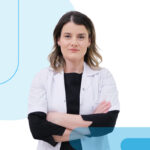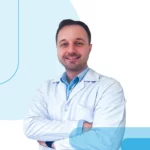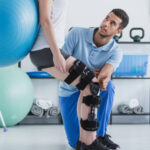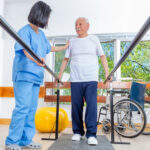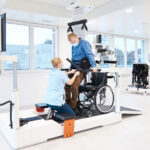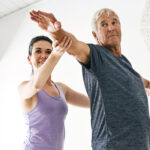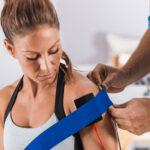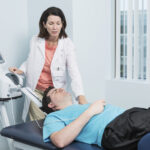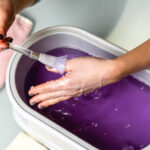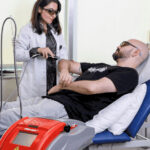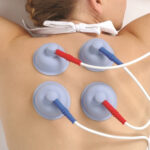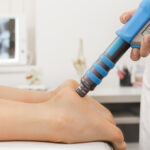Burtom ‣ Departments ‣ Physical Therapy and Rehabilitation
Language: 🇬🇧 English | 🇹🇷 Türkçe

Physical Therapy and Rehabilitation Department Overview

The Physical Therapy and Rehabilitation Department is dedicated to optimizing physical function and well-being through comprehensive care. Our skilled team of therapists employs evidence-based practices to address a spectrum of conditions, including musculoskeletal injuries, neurological disorders, and postoperative rehabilitation. Utilizing advanced techniques, personalized exercise plans, and cutting-edge equipment, we aim to restore mobility, alleviate pain, and enhance the overall quality of life for our patients. With a patient-centric approach, we prioritize individualized care, education, and support throughout the rehabilitation journey.
Key Functions of an Physical Therapy and Rehabilitation

The key functions of Physical Therapy and Rehabilitation encompass a range of services aimed at restoring, maintaining, and improving physical function, mobility, and overall well-being. Here are the key functions of this department:
Comprehensive Assessment: Conduct thorough assessments of patients’ physical abilities, limitations, and specific needs.
Individualized Treatment Plans: Develop personalized treatment plans tailored to each patient’s unique condition, goals, and preferences.
Musculoskeletal Rehabilitation: Address musculoskeletal conditions, including injuries, surgeries, and orthopedic disorders, through targeted exercises and interventions.
Neurological Rehabilitation: Provide specialized care for individuals with neurological disorders, such as stroke, spinal cord injuries, and multiple sclerosis, focusing on improving function and independence.
Cardiopulmonary Rehabilitation: Assist patients with cardiovascular and respiratory conditions through exercise and conditioning programs to enhance endurance and pulmonary function.
Pain Management: Implement strategies to manage and alleviate pain, incorporating manual therapy, modalities, and therapeutic exercises.
Balance and Coordination Training: Address issues related to balance and coordination, reducing the risk of falls and improving overall stability.
Orthopedic and Sports Rehabilitation: Support recovery from orthopedic surgeries and sports injuries, emphasizing functional restoration and performance enhancement.
Geriatric Rehabilitation: Provide specialized care for the elderly, addressing age-related mobility challenges and enhancing overall functional capacity.
Pediatric Rehabilitation: Offer rehabilitation services for children with developmental delays, congenital conditions, or injuries, promoting optimal growth and development.
Occupational Therapy: Collaborate with occupational therapists to improve activities of daily living, fine motor skills, and adaptive functioning.
Speech and Language Therapy: Coordinate with speech therapists to address communication and swallowing disorders, particularly in cases of neurological impairment.
Patient Education: Educate patients and their families on therapeutic exercises, self-care techniques, and strategies for maintaining health and well-being.
Home Exercise Programs: Design home exercise programs to empower patients with tools for ongoing self-management and improvement.
Functional Capacity Evaluations: Conduct assessments to determine an individual’s ability to perform specific tasks, aiding in rehabilitation planning.
Preventive Care: Develop preventive exercise programs and strategies to reduce the risk of injury or recurrence of conditions.
Collaboration with Multidisciplinary Teams: Work collaboratively with physicians, nurses, and other healthcare professionals to ensure comprehensive and coordinated care.
Continuous Monitoring and Adjustment: Regularly assess progress and adjust treatment plans as needed to achieve optimal outcomes.
These key functions collectively contribute to the overarching goal of Physical Therapy and Rehabilitation, which is to enhance the physical function, independence, and quality of life for individuals across various age groups and medical conditions.
Situations within the scope of Physical Therapy and Rehabilitation

Physical Therapy and Rehabilitation address a wide range of situations, conditions, and scenarios, encompassing diverse patient needs. Here are various situations within the scope of this specialty:
Postoperative Rehabilitation: Supporting patients recovering from orthopedic surgeries, such as joint replacements or ligament repairs, to regain strength and mobility.
Musculoskeletal Injuries: Providing rehabilitation for injuries to muscles, bones, ligaments, and tendons, including sprains, strains, and fractures.
Neurological Disorders: Managing rehabilitation for individuals with neurological conditions, such as stroke, traumatic brain injury, spinal cord injury, and multiple sclerosis.
Cardiopulmonary Conditions: Offering rehabilitation services for individuals with heart and lung conditions, focusing on improving cardiovascular fitness and respiratory function.
Chronic Pain Management: Implementing strategies to manage and alleviate chronic pain, often associated with conditions like arthritis or fibromyalgia.
Sports Injuries: Assisting athletes in recovering from sports-related injuries, optimizing performance, and preventing future injuries.
Balance and Fall Prevention: Addressing issues related to balance and coordination to reduce the risk of falls, particularly in the elderly population.
Occupational Injuries: Providing rehabilitation for individuals recovering from work-related injuries, aiming to restore function and facilitate a return to work.
Pediatric Developmental Delays: Offering rehabilitation services for children with developmental delays or congenital conditions, fostering optimal growth and development.
Orthopedic Conditions: Managing a spectrum of orthopedic conditions, such as osteoarthritis, tendonitis, and scoliosis, through targeted rehabilitation programs.
Geriatric Rehabilitation: Addressing age-related mobility challenges, promoting functional independence, and enhancing overall well-being in the elderly.
Speech and Language Disorders: Collaborating with speech therapists to address communication and swallowing disorders resulting from neurological or structural issues.
Workplace Ergonomics: Advising on ergonomic adjustments and exercises to prevent workplace-related musculoskeletal issues.
Pre- and Postnatal Care: Providing exercises and support for pregnant women to promote musculoskeletal health and assisting with postnatal recovery.
Amputation Rehabilitation: Assisting individuals adapting to limb loss through gait training, prosthetic use, and mobility improvement.
Spinal Cord Rehabilitation: Addressing challenges associated with spinal cord injuries, focusing on mobility, independence, and adaptive strategies.
Home Modifications: Recommending modifications and adaptive equipment to enhance safety and independence in a home environment.
Cancer Rehabilitation: Supporting individuals recovering from cancer treatments, addressing issues related to fatigue, weakness, and mobility.
These situations highlight the versatility of Physical Therapy and Rehabilitation, demonstrating its ability to address a broad spectrum of conditions and scenarios across the lifespan.
Patient Experience in the Physical Therapy and Rehabilitation

The patient experience in Physical Therapy and Rehabilitation is characterized by a patient-centered approach that focuses on holistic care, individualized treatment plans, and active collaboration between healthcare providers and patients. Here are key aspects of the patient experience in this specialty:
Comprehensive Assessment: Patients undergo a thorough assessment of their physical abilities, limitations, and specific needs, providing a foundation for personalized care.
Clear Communication: Open and transparent communication between the therapist and the patient fosters a collaborative and trusting relationship. Patients are actively involved in decision-making processes.
Individualized Treatment Plans: Treatment plans are tailored to each patient’s unique condition, goals, and preferences, ensuring a personalized approach to rehabilitation.
Empowerment Through Education: Patients receive education about their condition, the rationale behind treatment approaches, and strategies for self-management, empowering them to actively participate in their recovery.
Hands-On Therapeutic Techniques: Manual therapy techniques, exercises, and modalities are employed to address specific physical challenges and enhance overall well-being.
Progress Tracking: Regular assessments track progress, allowing for adjustments to treatment plans as needed to achieve optimal outcomes.
Pain Management: Therapists collaborate with patients to manage and alleviate pain through targeted interventions and strategies.
Motivational Support: Encouragement and motivation play a crucial role in the rehabilitation process, fostering a positive mindset and commitment to the prescribed exercises and activities.
Functional Training: Rehabilitation programs focus on real-life functional activities, ensuring that patients regain the ability to perform daily tasks and activities important to their lifestyle.
Home Exercise Programs: Patients are provided with home exercise programs, empowering them to continue their rehabilitation independently and maintain progress outside of clinic sessions.
Emotional Support: Emotional well-being is addressed as an integral part of rehabilitation, recognizing the emotional impact of physical challenges and providing support as needed.
Patient-Centric Environment: The rehabilitation setting is designed to be patient-friendly, fostering a comfortable and supportive environment for the duration of treatment.
Collaboration with Multidisciplinary Teams: Therapists collaborate with other healthcare professionals, such as physicians, occupational therapists, and speech therapists, to ensure comprehensive and coordinated care.
Rehabilitation Technology: Integration of cutting-edge rehabilitation technology enhances the patient experience, making exercises more engaging and providing objective data for tracking progress.
Empathy and Understanding: Therapists demonstrate empathy and understanding, acknowledging the challenges patients may face and providing encouragement throughout the rehabilitation journey.
Continuity of Care: Therapists focus on continuity of care, providing ongoing support and follow-up to monitor progress, address concerns, and make adjustments to treatment plans as needed.
Overall, the patient experience in Physical Therapy and Rehabilitation revolves around personalized care, empowerment, and a commitment to achieving optimal physical function and well-being.
Conclusion

In conclusion, Physical Therapy and Rehabilitation stand as essential pillars of healthcare, dedicated to restoring, maintaining, and improving the physical function, mobility, and overall well-being of individuals across diverse conditions. The field’s commitment to a patient-centric approach, individualized treatment plans, and collaborative care contributes to a positive and empowering patient experience.
Therapists in this specialty employ a range of therapeutic techniques, hands-on interventions, and state-of-the-art technology to address various situations, from postoperative recovery to chronic pain management, neurological rehabilitation, and more. The patient journey is marked by clear communication, comprehensive assessments, and ongoing progress tracking, fostering a collaborative relationship between healthcare providers and patients.
The holistic nature of Physical Therapy and Rehabilitation extends beyond the physical realm, addressing emotional well-being and providing the necessary support for patients to navigate their rehabilitation journey successfully. With an emphasis on education, motivation, and continuity of care, the field strives to empower individuals to actively participate in their recovery and maintain their progress beyond the clinical setting.
As an integral component of multidisciplinary healthcare teams, Physical Therapy and Rehabilitation contribute significantly to improving the quality of life for individuals of all ages, ensuring they can achieve their fullest potential in terms of physical function and independence. This commitment to personalized care, continuous improvement, and patient empowerment underscores the significance of Physical Therapy and Rehabilitation in promoting overall health and well-being.
Medical Devices Used in the Physical Therapy and Rehabilitation

Physical Therapy and Rehabilitation utilize various medical devices to enhance the effectiveness of treatment and promote optimal recovery for patients. Here are some commonly used medical devices in this field:
Therapeutic Exercise Equipment: Includes resistance bands, free weights, and exercise machines to facilitate strength training and functional exercises.
Electrotherapy Devices: Electrical stimulation devices, such as TENS (Transcutaneous Electrical Nerve Stimulation) units, for pain management and muscle stimulation.
Ultrasound Therapy Machines: Utilized for deep tissue heating, promoting blood flow, and accelerating the healing process.
Heat and Cold Therapy Devices: Hot packs, cold packs, and devices like paraffin baths for managing pain, inflammation, and muscle spasms.
Continuous Passive Motion (CPM) Machines: Used after certain surgeries to promote joint mobility and prevent stiffness.
Functional Electrical Stimulation (FES) Devices: Applies electrical currents to stimulate specific muscles, assisting with muscle re-education and mobility.
Balance and Coordination Devices: Equipment like stability balls, balance boards, and wobble boards to improve balance and coordination.
Gait Training Devices: Treadmills with handrails, parallel bars, and walking aids for practicing and improving walking patterns.
Orthotic Devices: Customized braces, splints, and orthopedic supports to provide stability and correct biomechanical issues.
Prosthetic Devices: Artificial limbs designed to replace missing body parts, requiring specialized training for adaptation and use.
Cervical and Lumbar Traction Devices: Devices used to apply gentle traction to the spine, relieving pressure on the discs and nerves.
Pulsed Electromagnetic Field (PEMF) Devices: Applies electromagnetic fields to promote tissue healing and reduce inflammation.
Biofeedback Devices: Monitors and provides feedback on physiological processes, helping patients learn to control specific bodily functions.
Compression Therapy Devices: Pneumatic compression sleeves or stockings used to improve circulation and reduce swelling.
Assistive Devices: Walking aids, canes, crutches, and walkers to assist individuals with mobility challenges.
Wheelchairs and Mobility Scooters: Essential for individuals with severe mobility limitations, providing independence and assistance with mobility.
Virtual Reality (VR) and Augmented Reality (AR) Systems: Used for immersive rehabilitation exercises and simulations to improve motor skills and coordination.
Hydrotherapy Equipment: Underwater treadmills, whirlpools, and aquatic exercise equipment for rehabilitation in water.
Pain Relief Devices: Laser therapy devices and percussive massage devices for pain relief and muscle relaxation.
Cryotherapy Devices: Devices that apply controlled cold therapy to manage pain, reduce inflammation, and promote recovery.
These medical devices, in conjunction with the expertise of rehabilitation professionals, play a crucial role in optimizing the outcomes of Physical Therapy and Rehabilitation, facilitating the restoration of physical function and promoting the overall well-being of patients.
Areas of interest

Get a Free Second Opinion

I consent to Burtom Health Group using my aforesaid personal data for the purposes described in this notice and understand that I can withdraw my consent at any time by sending a request to info@burtom.com.





